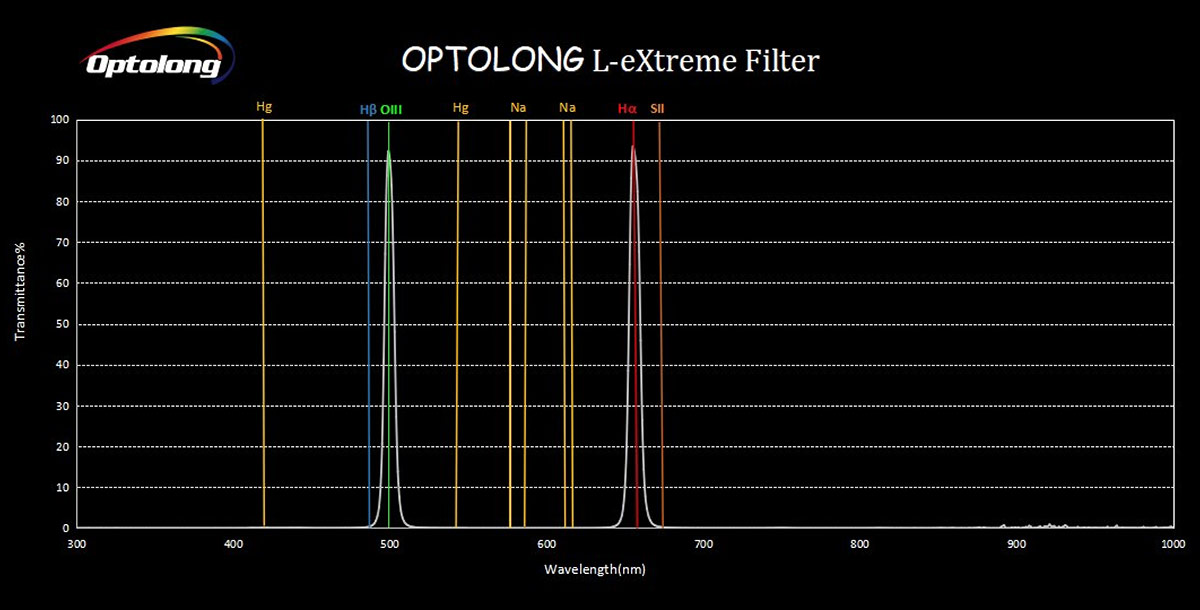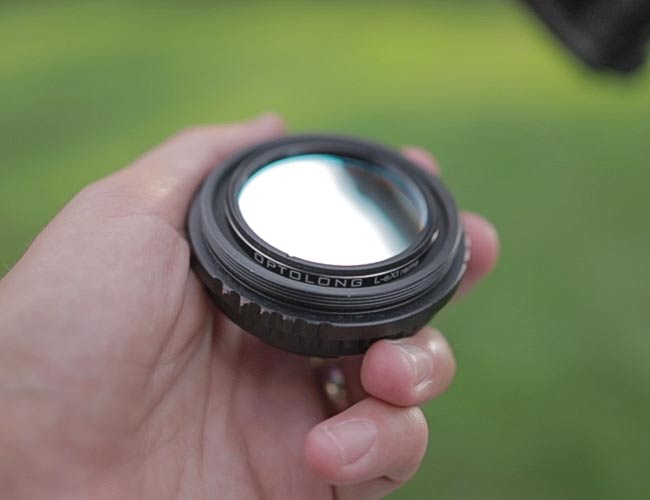Understanding Dual Narrowband Filters
A dual narrowband filter is an astrophotography filter that allows only two specific bandpasses of light to pass through. The most common wavelengths isolated in a dual narrowband filter are h-alpha (656nm) and OIII (500.7).
This type of filter is intended to be used with a color astronomy camera, or, a ‘one-shot-color’ (OSC) camera. When a dual narrowband filter (or multi-bandpass filter) is placed in front of an OSC camera, only the selective wavelengths of light will pass through to the sensor.
A great example of a dual narrowband filter is the Optolong L-eXtreme filter. This is a useful astrophotography filter for the city, as it blocks out much of the unwanted light of a city sky. Each dual narrowband filter will come with a light transmission chart showing the bandpass allowances.
The transmission graph of the Optolong L-eXtreme Filter.
When you capture images with a dual narrowband filter, the image data is ‘punchier’ with more contrast than a typical broadband image. These filters have a way of creating a more dynamic-looking image straight out of the camera thanks to their unique bandpass isolation.
For this reason, these types of filters are very popular among amateur astrophotographers imaging from the city. It can make the image-processing stages of your astrophotography project easier by largely ignoring gradients and sky glow.
The Veil Nebula captured using a dual narrowband filter from a bright city sky (Bortle 7).
Choosing the right dual narrowband filter for you comes down to your specific needs and imaging location. From a city or suburban sky (Bortle Scale Class 5-8), I suggest a dual bandpass filter that isolates the Ha and OIII bandpasses at a width of 3-7nm.
Depending on the type of dual narrowband filter you are using, the bandpass may vary in width, affecting the allowance of light that can pass through to your camera sensor.
I have found the Optolong L-eXtreme filter to be the most practical choice with a great balance between function and affordability. Here is a short list of dual narrowband filters that are widely enjoyed in the amateur astrophotography community:
Multi Bandpass Filters
Astrophotography filters designed to isolate narrow wavelengths of light are not limited to two bandpasses. Multi-bandpass filters are also available, including quad-bandpass filters like the Optolong L-Quad Enhance filter.
As bandpass allowances are incorporated into the filter design, the cost tends to go up. For example, the Radian Triad Ultra filter costs over $1000.
The best place to review dual narrowband filters and understand their capabilities is to browse images on AstroBin. You can search for images captured using specific camera and filter combinations to ensure there are no surprises.
While a quad-band filter allows more light to pass through to the sensor, it may help to create a more natural-looking image. For the most natural star colors, a broadband filter like the Optolong L-Pro is recommended.
The Seagull Nebula. ZWO ASI2400MC Pro, Radian Triad Ultra (Multi Bandpass FIlter).



